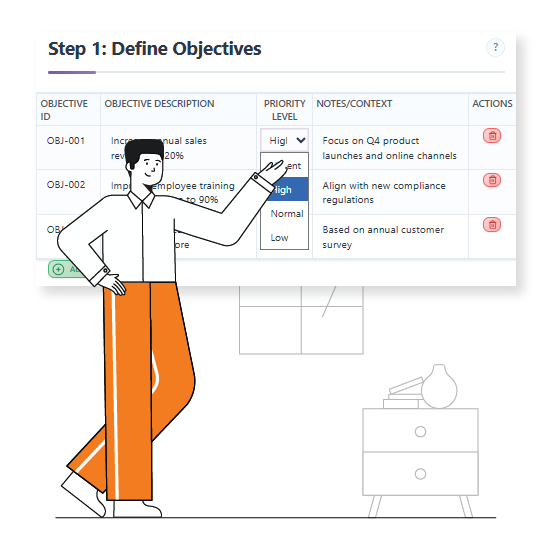Now Reading: From Analysis to Action: Building Your Action Plan
-
01
From Analysis to Action: Building Your Action Plan
From Analysis to Action: Building Your Action Plan
The Bridge from Strategy to Reality
The gap analysis is a powerful tool for strategic clarity, but it is ultimately just the beginning. The real work—and the real value—of the process lies in translating your findings into a detailed, executable action plan. This phase transforms the “what” and “why” of your analysis into the “how,” creating a tangible roadmap for success. A well-constructed action plan is the bridge that carries your strategic insights from a static document to a dynamic, goal-driven reality. It is the critical step that ensures your efforts are not only understood but are also put into motion with purpose and accountability.
From Insights to Tangible Steps
The first and most important step in building your action plan is to break down your high-level solutions into concrete, measurable tasks. Each task should be directly tied to a specific gap identified in your analysis. For instance, if your analysis revealed a “lack of digital marketing expertise” as a key gap, the action plan should not just state “get more expertise.”

Instead, it should include specific, micro-steps like: “enroll marketing team in social media certification course by Q4,” “hire a new digital marketing specialist,” or “host a training workshop on search engine optimization.” This granular approach makes a daunting goal less intimidating and more achievable.
Allocate Resources and Establish Accountability
For an action plan to be effective, it must be practical. This means identifying and allocating the necessary resources to ensure each task can be successfully executed. This includes not just budget, but also personnel, technology, and time. Equally important is establishing clear accountability. For each task, you must assign a responsible party, a clear deadline, and a set of key performance indicators (KPIs) to measure progress. A task without a name is a task that will not get done. By defining ownership, you empower your team and ensure everyone knows their role in achieving the desired outcome.
Create a Dynamic Roadmap, Not a Static List

A common mistake is to treat the action plan as a static document that is filed away after a single meeting.
The most effective action plans are living documents that are reviewed and updated regularly.
They serve as a roadmap, guiding the team toward its goal while remaining flexible enough to adapt to new challenges or opportunities. Schedule regular check-ins to monitor progress, celebrate milestones, and troubleshoot any roadblocks.
This continuous feedback loop ensures that your efforts stay on track and that your strategic plan remains relevant, effective, and aligned with your long-term goals.

